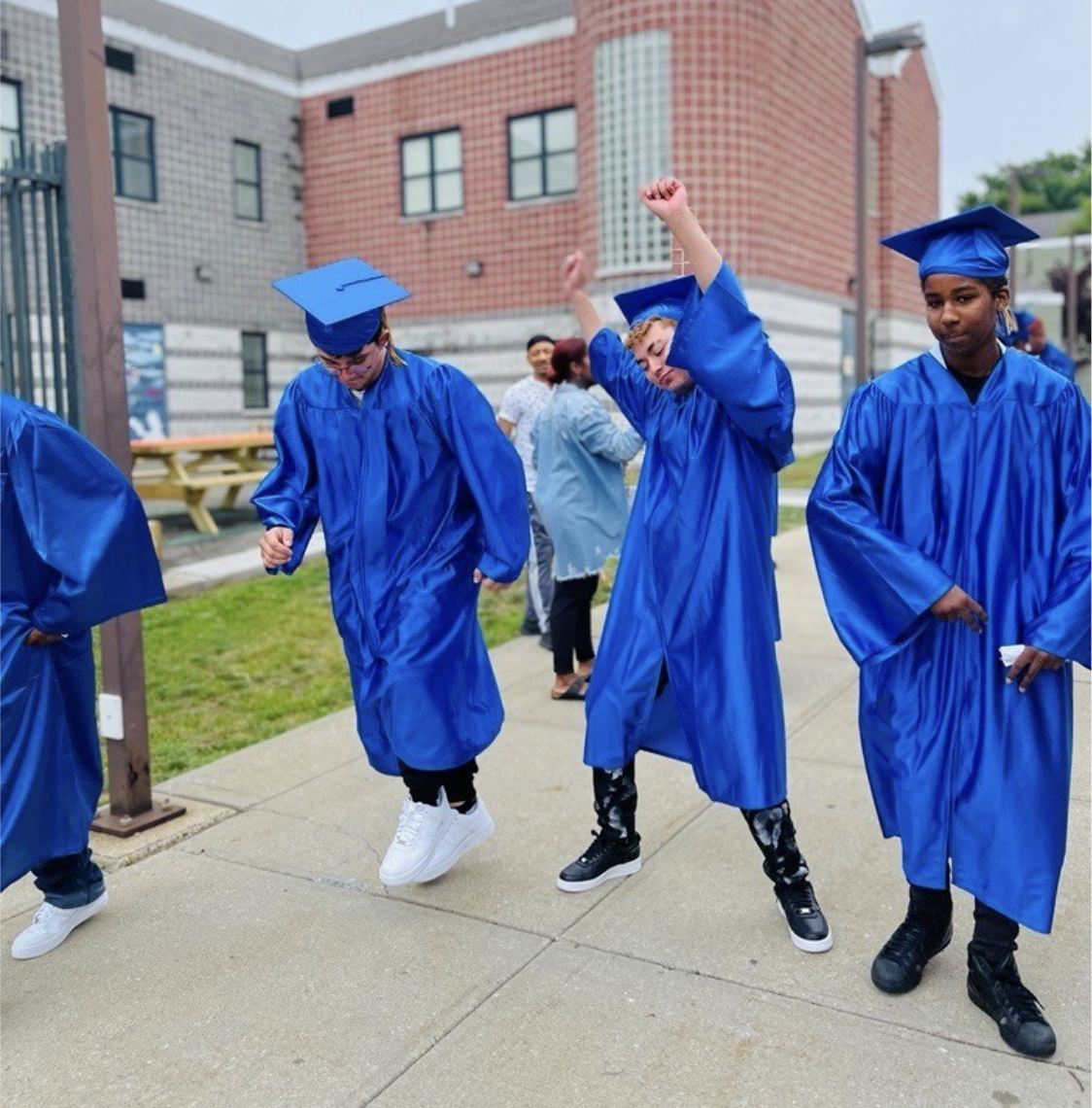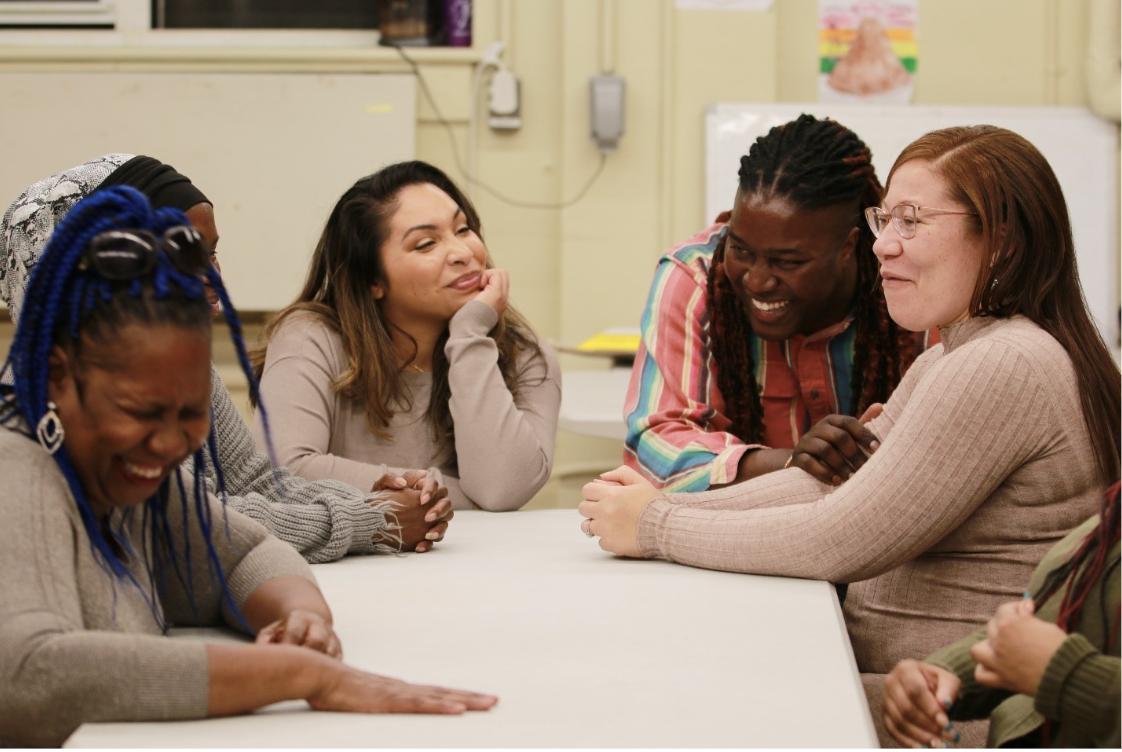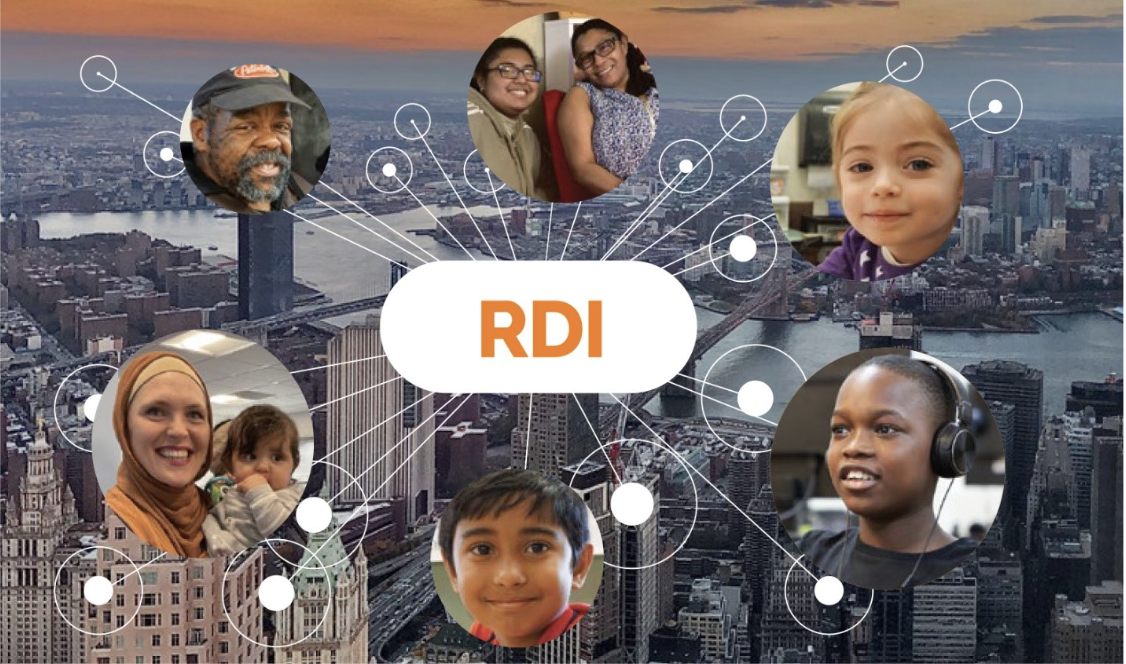
Four Initiatives to Disrupt the
Trajectory of Generational Poverty

The Child Center works with families and whole communities to turn cycles of poverty into cycles of opportunity. In neighborhoods where families face profound hardships brought on by the living legacy of racial and economic injustice, we strive to clear the obstacles in their path so they can thrive and sustain lives they envision.
Feedback from clients and research alike helped us reframe this work into four initiatives that focus on the building blocks of families’ lives: education, health, direct investment, and new models for community development. We serve clients in all six of our program areas in ways that strengthen these building blocks.
The Four Initiatives

1. Family Health & Wellness
Positive change has the best chance of taking root when it grows in a family that’s healthy—physically, mentally, emotionally, and financially. We partner with communities and other community-based organizations (like Strong Children Wellness, pictured here) to ensure wellness opportunities are part of the fabric of community life.

1. Family Health & Wellness
At a Glance
-
Primary medical care
-
Outpatient mental health and addiction services
-
Individual, group, and family therapy
-
School-based mental health
-
Home visiting
Positive change has the best chance of taking root when it grows in a family that’s healthy—physically, mentally, emotionally, and financially. A child can’t learn on an empty belly, and a parent can’t function at their best when living in a home with no heat in the winter, facing domestic violence, or struggling to meet essential needs in any number of ways. Families are at a disadvantage if their physical and mental health care needs can’t be met because of obstacles like food insecurity, a lack of providers who speak their language, or because they live transient lives, being forced to move from shelter to shelter. That's why we address all these things, known as social determinants of health. Our programs provide mental and physical health services, as well as assistance with essentials such as food and health insurance. We know that when families have their basic physical and emotional needs met, they can thrive.
Family health and wellness is woven into all programs at The Child Center. It's front and center in our behavioral health and physical health services, and it's also embedded in programs like early childhood education and youth development.
Photo: Our Beach 41 Cornerstone Community Center in Far Rockaway, Queens, holds an annual health fair for community residents. From left to right: Jason Rojas, Group Leader; Shaquana Pearson, Program Coordinator; Liz Diaz Mendez, Group Leader.

In 2023:

2. High School Graduation Rates
At a Glance
-
Early childhood education
-
Reading on grade level
-
Mental health and practical support in public schools
-
High schools for over-age and under-credited students
-
Resiliency building and goal setting
-
Enrichment and leadership opportunities
-
Internships and college/career readiness
-
On-site school at our residential treatment facility for teens
A high school diploma is the gateway out of poverty, leading to more career options, fewer adverse outcomes, and a real chance for youth to build a future based on their own strengths and dreams. But a child can’t excel at enrichment opportunities that don't exist in their communities, and a teen can’t graduate if they routinely miss school to support the family. Living in poverty affects students’ ability to succeed in school. That’s why The Child Center supports the whole child and family. We provide crucial academic support and wrap services around entire families so that basic needs are met, and children can focus on and succeed in school. Through our early childhood education programs and all through elementary, middle, and high school, we ensure that the young people in our communities have the academic, social-emotional, and practical support they need to succeed in school and beyond.
With this holistic, long-view approach, our programs have achieved significant results.
Photo: At our Head Start centers, cooking and baking involve measuring, following directions, fine motor development, and other skills that prepare children for kindergarten.

In 2023:

3. Cash+Community Works
At a Glance
-
Direct cash investment in families and communities
-
Peer support and networking
-
Data analysis to inform future programs and policy change
When you ask an adult in poverty what they need to get out of it, they usually know the answer—and it’s always based on their unique circumstances, strengths, and goals. That’s why Cash+Community Works (C+C) provides the resources for participants to dictate how they change their lives and community. Launched in 2022, it is a groundbreaking peer-driven change model that empowers communities to harness their collective creativity, resources, and power to effect sustainable change. The guiding principle is that families are the experts on what they need to achieve their goals, and our job is to act as investors, advocates, and partners. The initiative also includes a networking component through which families share support, knowledge, contacts, and resources so they can lift their families and communities together.
Photo: Participants of a C+C cohort in Flushing, Queens, at the site of a future daycare center where they are key investors.

Examples of C+C Projects
Cohorts engaged in a wide variety of projects to better themselves, their families, and their communities.
Participants used stipends to start or advance sustainable careers based on their own passions and strengths. This ranged from enrolling in courses to become a licensed pharmacy technician to becoming shareholders in a child care center. One participant purchased machinery to create bags and accessories out of leather scraps.

At a Glance
-
Bold solutions to generational poverty
-
Innovative data systems and dashboards to measure what works
-
Analyze results to impact social service perception, policy, and delivery
Too often, social service programs don’t address the root causes of poverty and instead focus only on addressing immediate needs—such as food insecurity or homelessness—rather than innovating long-term solutions. The kind of change we want isn’t just solving problems as they come; it’s families and communities breaking free from poverty, permanently. Through RDI, we gather better data to create a fuller picture of what truly helps communities succeed. Our goal is to reshape the policies and narrative around social services and economic inequities. We will continue innovating and scale up what works until no child is born into poverty, and no adult is condemned to it.
All the statistics that we capture throughout our programming are a result of RDI. Our data systems and dashboards are so innovative that the NYS Office of Mental Health asked us to share them at statewide conferences. We also have hired a mixed methods researcher, trained in analyzing the impact of data not easily quantified—such as overall wellness—who developed templates to evaluate existing and pilot programs. Future plans include an Impact Collaborative to share best practices across the social impact sector.
Our team will never be satisfied with the status quo. We will keep innovating and taking informed risks—with data and clients’ voices as our guide—to determine the way forward.
Photo: Capturing and reviewing data are critical to ensuring we serve people in ways that truly move the needle.

Improve family
well-being
Increase high school
graduation rates
Improve economic mobility
Disrupt the trajectory of generational poverty
















